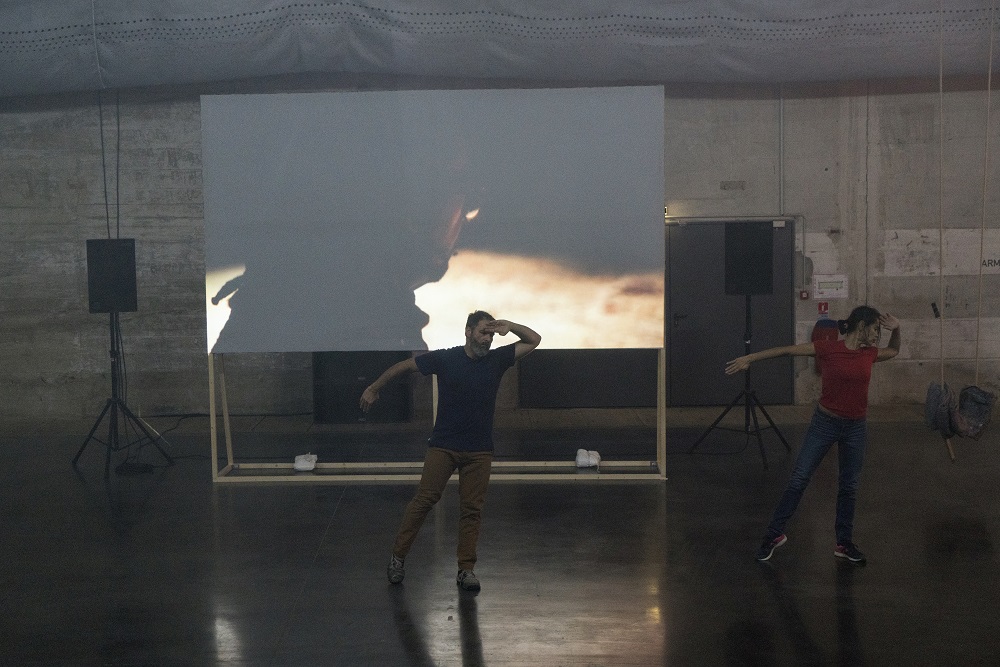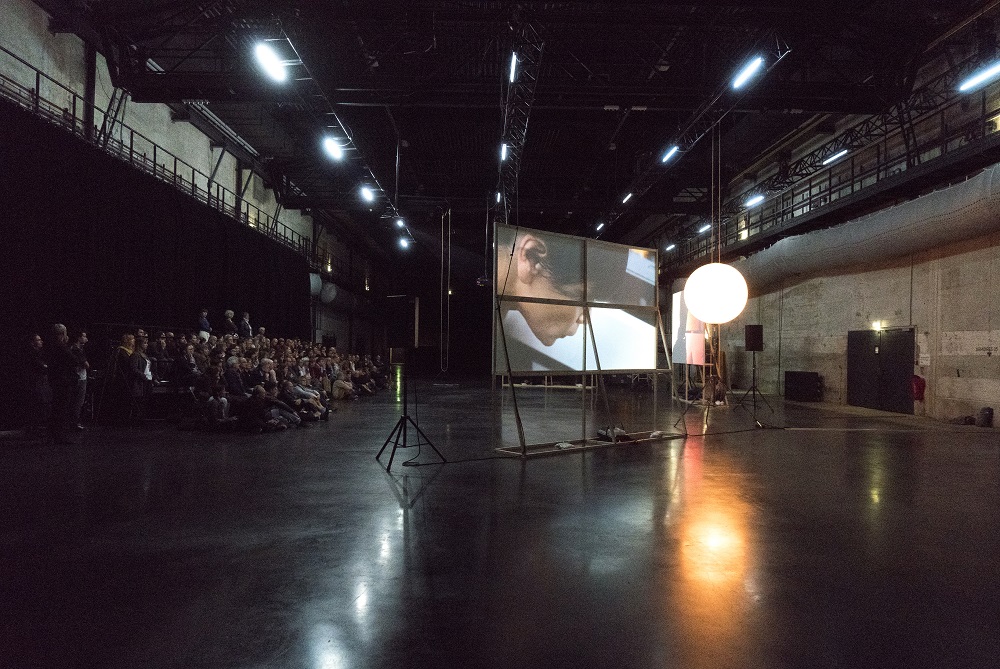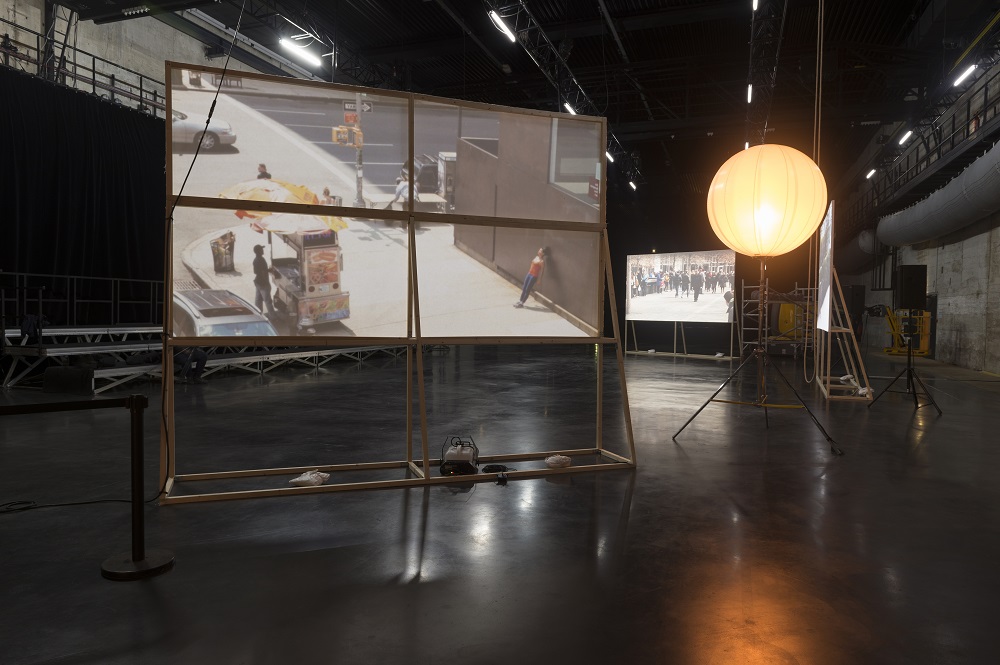A taxi driver, an architect and the High Line, 2016
"En 2013, suite à l’invitation de Sophie Claudel, attachée culturelle à l’Ambassade de France à New York, pour le programme « Carte Blanche », j’ai pensé un projet qui compose un portrait de la ville de New York à travers ses habitants, ses espaces et les liens qu’ils entretiennent. Mon regard de danseuse et/ou mon corps sont impliqués, suivant le médium emprunté : film, performance, bande-son. J’ai proposé à l’artiste visuel Jocelyn Cottencin de me rejoindre pour élaborer le projet A taxi driver, an architect and the High Line. " Emmanuelle Huynh
A taxi driver, an architect and the High Line est une trilogie filmée. C’est un portrait de la ville à travers trois caractères et leurs relations à l’espace et à l’architecture. Les deux premiers personnages sont un chauffeur de taxi (Phil Moore) et un architecte (Rick Bell). Le troisième est un monument, la High Line. Coulée de verdure au cœur de la cité, la High Line est métaphoriquement considérée comme une personne qui traverse la ville, la révèle et provoque la rencontre entre des personnes et des histoires.
Les films rassemblent à la fois des mémoires physiques, des histoires intimes et des espaces. Chacun d’entre-eux navigue entre fiction, documentaire, performance et poésie.
Le projet est avant tout un dialogue avec chacun des protagonistes, une recherche à travers leur mémoire physique et leur histoire personnelle. Des gestes, des mouvements, des trajets ont été identifiés. Ces gestes sont réengagés dans la ville. Ils peuvent être replacés dans leur contexte d’origine comme déplacés. Chaque action dialogue avec le contexte et provoque une lecture de l’espace depuis celle du corps. En contrepoint, le regard porté sur la ville s’intéresse aux activités quotidiennes, aux gestes liés au travail, au rythme de la ville.
A taxi driver, an architect and the High Line est aussi une aventure artistique partagée par une chorégraphe et un artiste contemporain dans laquelle chacun questionne en permanence le champ de l’autre. Le geste dansé, aussi discret et intime soit-il, est l’outil d’expérimentation et de définition de l’urbanité tandis que l’espace et la temporalité de l’installation vidéo en deviennent le support pour être à leur tour remis en jeu dans la performance chorégraphique.
Celle-ci prolonge ce qui est mis en œuvre dans l’installation. Les principes de mémoire activée au présent sont étendus au domaine musical et aux arts visuels. Des évocations, déformations, ré-interprétations de performances d’artistes et de chorégraphes majeurs de la scène New yorkaise des années 60 comme Robert Morris, Simone Forti, Trisha Brown, David Gordon, des citations des chorégraphes contemporain(e)s, DD Dorvillier, Jennifer Lacey, Xavier Leroy côtoient les expérimentations musicales de Moondog, Animal Collective ou Suicide.
Les actions d’Emmanuelle Huynh et Jocelyn Cottencin sont pensées comme le quatrième écran de l’installation, sorte de hors champ où l’histoire des formes, la notion de chantier et de travail composent un paysage fait de temps et de mouvements.
teaser A TAXI DRIVER, AN ARCHITECT & THE HIGH LINE
photos © Marc Domage / Vue de l’installation au LiFE Saintâ€Nazaire, 2017
Distribution / Crédits
Films, installation et performance Emmanuelle Huynh et Jocelyn Cottencin
D’après une conception originale d’Emmanuelle Huynh
Direction technique Maël Teillant
Production Plateforme Mùa
Coproduction Les Services Culturels de l’Ambassade de France à New York ; Le Quartz, Scène nationale de Brest ; Passerelle Centre d’art contemporain, Brest
Remerciements:
AIA New York Center for Architecture, MOMA PS1, Queens Museum, le Musée de la Danse - Centre chorégraphique national de Rennes et de Bretagne, La Criée centre d’art contemporain de Rennes, Sophie Claudel, Rima Abdul Malak, Dorothée Charles, Nicole Birman, Esther Welger-Barboza, Etienne Bernard, Mathieu Banvillet, Breckyn Drescher, Jumatatu Poe, Uta Takemura, Irène Hultman Monti, Shelley Senter, Walter Dundervill, Olivier Souchard, Xavier Leroy, DD Dorvillier, Jennifer Lacey, Ben Evans.
Presse
Kostar / octobre-Novembre 2017
Ouest-France / 24 octobre 2017


